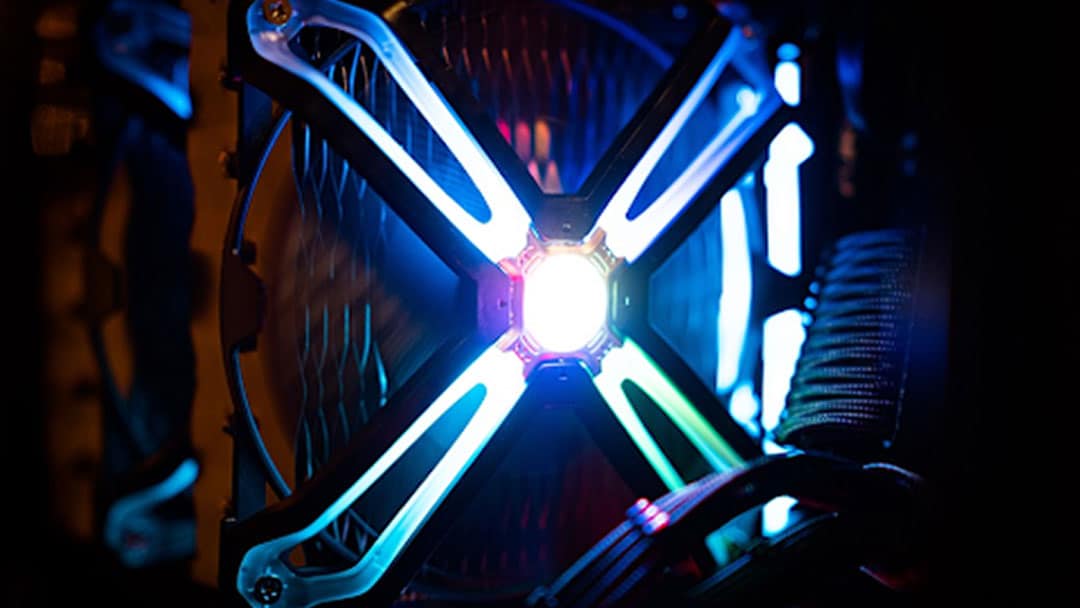It’s no secret that data centers use quite a lot of electricity. Considering the massive computing power they can fit onto a single data floor and the cooling infrastructure required to maintain an ideal operating environment, data centers consume approximately 3% of the world’s electricity.
With the growth of hyper-scale facilities, power usage is likely to keep increasing despite the improvements being made in efficiency.
By understanding cooling capacity, you can cool your data center IT devices much more efficiently. To help prevent any server or equipment issues, you need to keep your data center operating at the correct temperatures through the use of cooling systems.
Related: What Data Centers Do and Why
What is Cooling Capacity?
At its core, cooling capacity is a system’s ability to remove heat from the space around it. Cooling capacity is typically measured in watts (W) but can also describe how much water at a certain temperature can be frozen in a specific amount of time via tons. The British Thermal Unit (BTU) is the temperature required to increase a pound of water by one degree Fahrenheit. BTUs per hour shows how much heat a unit can dissolve in an hour.
You can also reference cooling capacity via tonnage. For example, talking about a 2-ton air conditioner, the “2-ton” references its cooling capacity, not its physical weight. In this application, a “ton” represents how much cooling power a ton of ice offers in a 24-hour period. For example, one ton of refrigeration equals 200 BTU/minute and 211 kJ/minute.
A one-ton AC uses approximately 1,200 watts of electricity per hour, and the average electricity cost in the US is $0.12/kWh. Running that one-ton AC for a 24-hour period would use 28,800 watts, costing about $3.46.
Measuring Data Center Heat Output
Above, we mentioned the measurement units commonly used in heating and cooling, but let’s look at how to make any conversions you might need to know:
- Converting BTU/hour into watts: Multiply by 0.293
- Converting tons into watts: Multiply by 3.41
- Converting watts into BTU/hour: Multiply by 3.41
- Converting watts to tons: Multiply by 0.000283
The power used by IT equipment’s AC mains is almost completely converted into heat, and the power used by data lines is negligible. So, the thermal output of your equipment is equal to its power consumption. The exception is VoIP routers—their heat output is lower than their power consumption because the power they consume often gets sent to remote terminals.
Data Center Cooling Capacity Load
Heat generation is a side-effect of running electrical equipment. In data centers, excessive heat can damage servers and other equipment. If temperatures get too high, your servers might shut down, and regularly operating at high temperatures can shorten their lifespans.
High humidity is a similar problem, but more on that later.
Determining data center air cooling equipment sizes involves considering factors like:
- The cooling load (or heat output) of your equipment
- The heat output of the lighting
- The heat output of your personnel
- The cooling load of the building
- Oversizing is required because of humidification effects
- Oversizing for redundancy
- Oversizing for future growth
Related: Understanding Data Center Infrastructure
Determining the Overall Heat Output of a Data Center
To fully understand your data center’s cooling capacity load, you need to first calculate the total heat output of your equipment. This includes lighting, people, UPS systems, and every piece of IT equipment.
The heat output of your power distribution and UPS systems consist of both a fixed loss and one that is proportional to the data center’s operating power. Because the losses are relatively consistent between all models and brands of this type of equipment, you can estimate the values without seeing any significant errors in calculations.
While air conditioners don’t contribute to the thermal load of a data center (because it releases the heat outdoors), the heat they produce does impact their efficiency. It’s essential to account for this loss when sizing a unit.
Here’s how to calculate the heat output for your data center:
- Add up all of the load power from your IT equipment. This number is your heat output.
- Use this formula for a battery-powered UPS system: [0.04 x Power system rating] + [0.05 x Total IT load power.] If you use a redundant system, do not include its capacity.
- For a power distribution system, use this formula: [0.01 x Power system rating] + [0.02 x Total IT load power.]
- To calculate your lighting’s heat output, use the floor area of the building and multiply the square footage by 2.0 or the square meters by 21.53.
- To calculate the amount of heat produced by your personnel, multiply the maximum amount of people in the facility at once by 100.
Adding up the above calculations will give you the data center’s total heat source output.
Related: Data Center Efficient Power Management
The Effect of Humidification on Data Center Cooling Capacity
When calculating cooling requirements, you need to account for supplemental humidification. AC systems both control humidity and remove heat. Ideally, the system would keep a constant amount of water in the air and eliminate the need for additional humidification. But, because most AC systems create a significant amount of condensation, they decrease humidity. Because of that, you’ll need to supplement the data center with humidification equipment, but that also adds to the heat load.
For small systems that have a ducted air return, you don’t have to account for humidity. However, for larger systems that mix the air, you might need to oversize your AC unit by up to 30 percent.
Benefits of Data Center Cooling Capacity
By optimizing your cooling capacity, you ensure that your data center stays cool, which provides these benefits:
- Ensures server uptime: Servers can run continuously without overheating when proper cooling is maintained.
- Runs with greater efficiency: Your servers will run more efficiently as you adjust and reduce hot spots in your data center.
- Extends the lifespan of the equipment: When you maintain an optimal cooling capacity, your equipment is less stressed, doesn’t yoyo between overheating, and operates efficiently, which extends the life of the equipment.
Drawbacks of Maintaining Cooling Capacity
While creating an optimal cooling capacity extends the life and productivity of your data center, it does have a few drawbacks that your IT team should consider:
- Expensive: Maintaining cooling capacity requires costly HVAC systems and energy costs to ensure efficiency.
- Environmental Impact: Maintaining cooling capacity requires up to 50% of the energy used in a data center. Data centers consume 3% of the world’s electricity and are responsible for 0.5% of CO2 emissions.
Determining Your Cooling Capacity Factor (CCF)
On average, a data center’s cooling capacity is four times the total IT heat load, which impacts the cost and environmental impact of the data center. Based on a standard temperature of 75 degrees Fahrenheit and humidity of 45%, most data centers have a cooling capacity factor range of 1.5 to 3.
How to calculate your CCF: Total cooling capacity in kW / 1.1 * Total IT critical load in kW
IT critical load = Total UPS output for the data center (You may want to add 10% for hard-to-measure factors like lights and building envelope.)
Data centers with a cooling capacity factor greater than 3 can dramatically improve costs and operational efficiency. Several airflow management techniques can improve your data center’s CCF.
Ways to Improve Your Cooling Capacity Factor
Here are some airflow management techniques that can improve your CCF and reduces costs and your data center’s environmental impact:
- Seal all unmanaged openings on the horizontal floor space to keep cool air from escaping.
- Seal empty space within the IT cabinets and racks, so there aren’t too many cabinets facing a common direction.
- Block any rows with empty space in between or under the cabinets to keep hot air from moving into the cold aisle.
- Experiment with reducing fan speeds or raising the chilled water temperature to reduce energy consumption.
Another essential way to improve your CCF is to monitor your cooling capacity through a software management system that can update dynamically based on the data center’s power and cooling demands. You’ll want to find a software management solution that reports and controls:
- Cooling capacity data at room, row, and rack levels
- Changes to the capacity plan
- Alerts when capacity isn’t met
Want expert help optimizing your data center cooling capacity? Learn more about our data center design services.
Related Link: How to Calculate Data Center Cooling Needs
Determining Cooling Capacity With C&C
Properly calculating your data center’s cooling requirements is critical to reliable, cost-effective operations. Excessive heat or humidity can reduce your equipment’s lifespan and cause devices to shut down. You need to account for all of your equipment’s cooling load and heat sources.
Working with a data center expert like C&C is a smart strategy to ensure optimal, efficient cooling of your data center. We offer the best, modern cooling technologies and can help design, install, and maintain the entire cooling system.
Interested in learning about how we can optimize your data center cooling system? Get in touch with our data center cooling experts today!
Last Updated on January 20, 2023 by Josh Mahan




